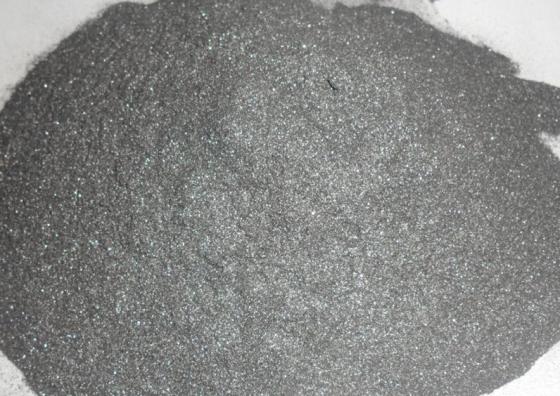Aluminum powder is a highly dispersed aluminum powder. The color of the finely ground metal is silvery gray. The powder is easily smeared, greasy to the touch. The shade depends on the amount of impurities in the metal used to produce the aluminum powder. A color close to silver indicates a low content of impurities (copper, manganese, silicon, iron, moisture, etc.). The shape of the particles is plates (scales), the thickness of which is 0.25 – 1 micron. The surface of each flake is covered with a thin, visually invisible layer of fat and oxide. The powder is very easily soiled, it is quite difficult to wash it off when it gets on the skin.
The following can be used as a lubricant: paraffin, oleic, stearic acids, vegetable or mineral oils, etc. The lubricant is introduced when grinding the starting material. The presence of lubricants on the surface of aluminum powder particles prevents metal oxidation under the influence of atmospheric oxygen, adhesion of pigment particles during storage, and affects the wettability of film-forming agents. The deterioration of wettability contributes to the floating of the powder on the surface of the paint layer, due to which the coating acquires specific and very valuable properties.
Pigmented alumininium paste and powder Malaysia is presented in two grades: PAP-1 and PAP-2. The difference lies in the size of the fractions of aluminum powder and the hiding power on water (from 7200 to 9700 cm 2 / g). The composition of PAP-1 and PAP-2 is absolutely the same. PAP-2 is more finely ground.
Technical characteristics, properties of aluminum powder
Finely ground powder contains from 82 to 92% of active aluminum. The spreading rate is 10 g / m 2. The density of the powder is 0.15 – 0.3 g / cm 3. Balance on sieves 008 – 0 – 0.3%. The content of components of organic origin is 3 – 4%. Aluminum powder should be homogeneous, without visually visible coarse fractions.
A very useful property of aluminum powder is its tendency to “leaf”. When painting, the powder does not remain in the thickness of the paint layer. The plates float up and are located parallel to the surface, partially overlapping each other. The ability to “leaf” depends on the composition of the lubricant covering each particle, on the properties of the solvent and the film-forming base of the paint and varnish material. The powder adheres well to steel surfaces. For more articles such as this one, click here.


